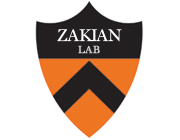The yeast Pif1 helicase prevents genomic instability caused by G-quadruplex-forming CEB1 sequences in vivo.
Publication Year
2009
Type
Journal Article
Abstract
In budding yeast, the Pif1 DNA helicase is involved in the maintenance of both nuclear and mitochondrial genomes, but its role in these processes is still poorly understood. Here, we provide evidence for a new Pif1 function by demonstrating that its absence promotes genetic instability of alleles of the G-rich human minisatellite CEB1 inserted in the Saccharomyces cerevisiae genome, but not of other tandem repeats. Inactivation of other DNA helicases, including Sgs1, had no effect on CEB1 stability. In vitro, we show that CEB1 repeats formed stable G-quadruplex (G4) secondary structures and the Pif1 protein unwinds these structures more efficiently than regular B-DNA. Finally, synthetic CEB1 arrays in which we mutated the potential G4-forming sequences were no longer destabilized in pif1Delta cells. Hence, we conclude that CEB1 instability in pif1Delta cells depends on the potential to form G-quadruplex structures, suggesting that Pif1 could play a role in the metabolism of G4-forming sequences.
Keywords
Base Sequence,
Nucleic Acid Conformation,
Humans,
Mutagenesis, Site-Directed,
DNA, Recombinant,
Models, Genetic,
Saccharomyces cerevisiae Proteins,
Saccharomyces cerevisiae,
In Vitro Techniques,
Alleles,
Recombination, Genetic,
Base Composition,
Genomic Instability,
DNA Helicases,
DNA, Fungal,
Rad51 Recombinase,
Minisatellite Repeats,
Rad52 DNA Repair and Recombination Protein
Journal
PLoS Genet
Volume
5
Issue
5
Pages
e1000475
Date Published
05/2009
ISSN Number
1553-7404
Alternate Journal
PLoS Genet.
PMID
19424434

